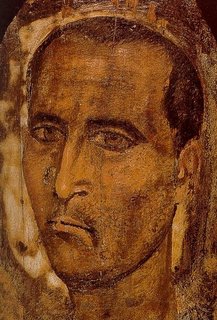Saints!
St. Helena Empress mother of Constantine the Great. She was a native of Bithynia, who married the then Roman general Constantius I Chlorus about 270. Constantine was born soon after, and in 293, Constantius was made Caesar, or junior emperor. He divorced Helena to marry co Emperor Maximian’s stepdaughter. Constantine became emperor in 312 after the fateful victory at Milvian Bridge, and Helena was named Augusta, or empress. She converted to Christianity and performed many acts of charity, including building churches in Rome and in the Holy Land. On a pilgrimage to the Holy Land, Helena discovered the True Cross. She is believed to have died in Nicomedia. Her porphyry sarcophagus is in the Vatican Museum. Geoffrey of Monmouth, England, started the legend that Helena was the daughter of the king of Colchester, a tradition no longer upheld. In liturgical art Helena is depicted as an empress, holding a cross.
Bl. Thomas Guengoro (1620) Japanese martyr. A Japanese native, he was arrested and crucified at Kokura along with his wife and young son for giving aid to Blessed Simon Kiota.
Bl. Mary Guengoro Martyr of Japan. The wife of Blessed Thomas Guengero, she was crucified at Kokura with her husband and son, James. She was beatified in 1867.
St. Hugh the Little (1255) Martyred nine year old of Lincoln, England, reportedly a victim of ritual killing by English Jews. King Henry III conducted the investigation of the crime which resulted in eighteen or nineteen Jews being hanged. Hugh had been scourged, crowned with thorns, and crucified. Miracles supposedly accompanied the recovery of the lad’s body from a well, and the martyrdom became part of Chaucer’s Canterbury Tales. The feast of the saint is no longer kept by the Church, and the entire account of the young saint is considered an example of the anti Semitism which was rampant throughout the Middle Ages. In art, he was depicted bound in cords, kneeling before the Blessed Mother.
Bl. Raynald of Ravenna Archbishop of Ravenna. Born at Milan under the name Raynald Concorrezzo, he entered the Church as a canon in Lodi and was later appointed bishop of Vicenza in 1296. In 1303 he was named archbishop of Ravenna, from which post he was a friend and supporter of the Knights Templar until their dissolution and annihilation in 1312.
Bl. Thomas Guengoro (1620) Japanese martyr. A Japanese native, he was arrested and crucified at Kokura along with his wife and young son for giving aid to Blessed Simon Kiota.
Bl. Mary Guengoro Martyr of Japan. The wife of Blessed Thomas Guengero, she was crucified at Kokura with her husband and son, James. She was beatified in 1867.
St. Hugh the Little (1255) Martyred nine year old of Lincoln, England, reportedly a victim of ritual killing by English Jews. King Henry III conducted the investigation of the crime which resulted in eighteen or nineteen Jews being hanged. Hugh had been scourged, crowned with thorns, and crucified. Miracles supposedly accompanied the recovery of the lad’s body from a well, and the martyrdom became part of Chaucer’s Canterbury Tales. The feast of the saint is no longer kept by the Church, and the entire account of the young saint is considered an example of the anti Semitism which was rampant throughout the Middle Ages. In art, he was depicted bound in cords, kneeling before the Blessed Mother.
Bl. Raynald of Ravenna Archbishop of Ravenna. Born at Milan under the name Raynald Concorrezzo, he entered the Church as a canon in Lodi and was later appointed bishop of Vicenza in 1296. In 1303 he was named archbishop of Ravenna, from which post he was a friend and supporter of the Knights Templar until their dissolution and annihilation in 1312.


0 Comments:
Post a Comment
<< Home